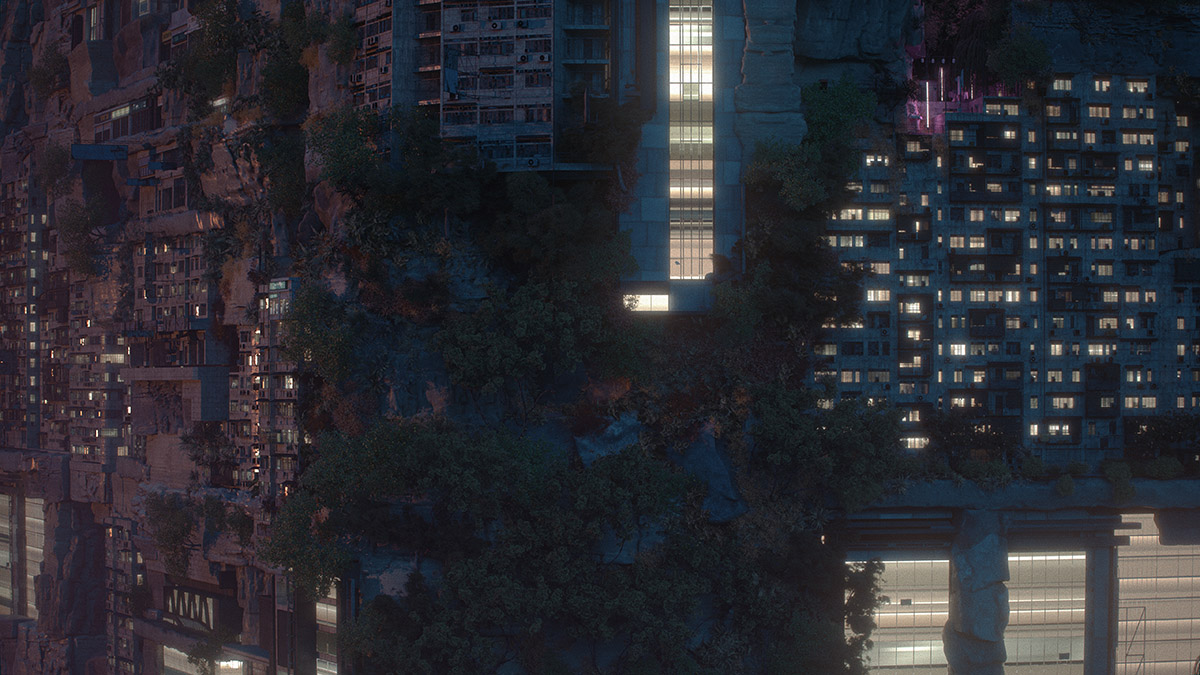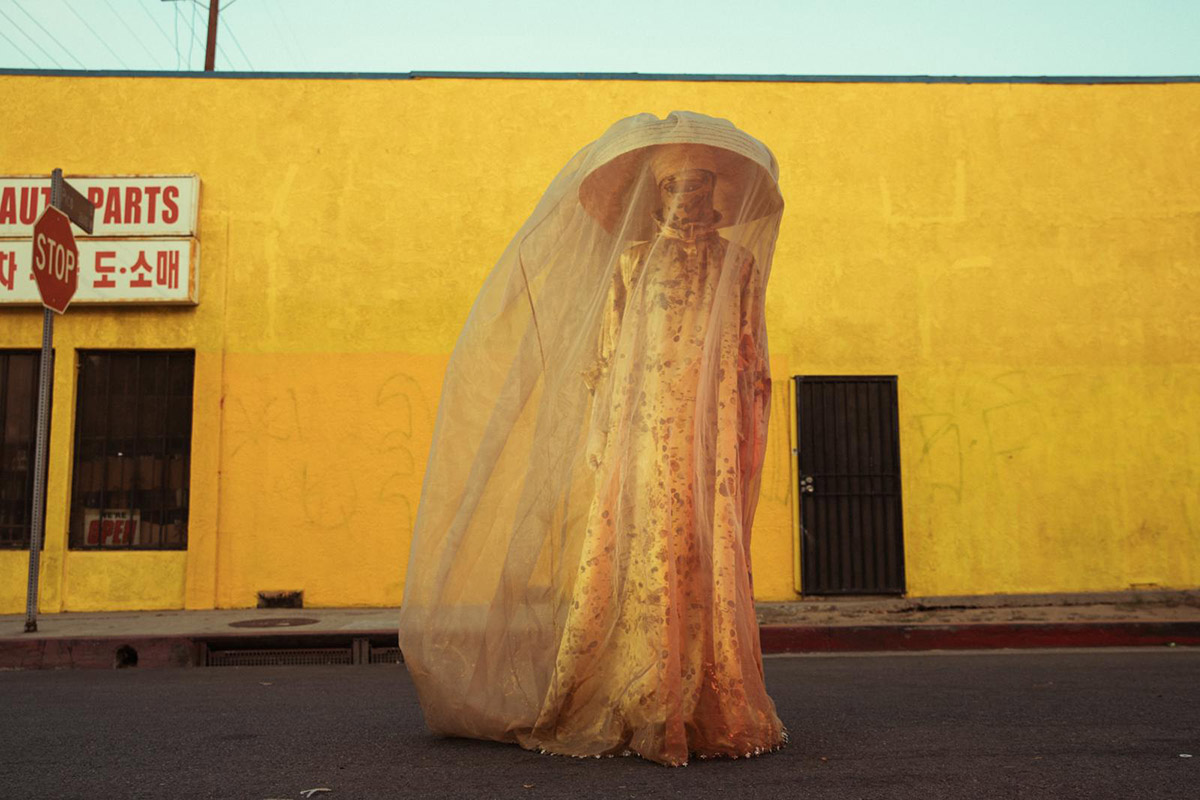Submitted by WA Contents
Liam Young's "wildly provocative" Planet City proposes new sustainable model tackling climate change
Australia Architecture News - Feb 03, 2021 - 10:09 16887 views

Australian-born architect and director Liam Young has created a new movie posing radical questions about climate change, environmental issues and the density that the whole world is tackling with.
Titled Planet City, a new movie, commissioned by the National Gallery of Victoria for the NGV Triennial, is a film set of an imaginary city that houses the 10 billion people, which is the entire population of earth in a single, giant massing.
Planet City is not a dystopia or just an urban fantasy, it provokes questions that how the entire population of the earth could live in a hyper-dense and mountainous-like city with zero-waste and avoid of environmental harm, which is a typical closed-circuit system and an example of circular living.
Planet City could be built in only 0.02 per ent of the planet’s surface, occupying an area "about the size of an average American state," according to Young in this video.
Liam Young is an Australian born film director and architect. He describes himself as "speculative architect" as his work intersects the fields of design fiction, critical design and the future.
Young's visionary films and "speculative" narrations and stories are aimed to address to the urgent needs of the humanities and environmental problems that the whole world is facing now. Young propels his questions with striking words and sets up his own critical background with his extraordinary images and movie sets to address to those urgent questions in a memorable way.
According to Liam Young, "although Planet City is wildly provocative, the film eschews the techno-utopian fantasy of designing a new world order."
"This is not a neo-colonial masterplan to be imposed from a singular seat of power," he said.
"It is a work of critical architecture – a speculative fiction grounded in statistical analysis, research and traditional knowledge."
"After centuries of colonisation, globalisation and never-ending economic extraction we have remade the world from the scale of the cell to the tectonic plate," Young added.
"But what if we radically reversed this planetary sprawl? What if we reached a global consensus to retreat from our vast network of cities and entangled supply chains into one hyper-dense metropolis housing the entire population of the earth?."

View from Algae lakes
"Climate change is no longer a technological problem, but rather an ideological one, rooted in culture and politics"
"It is a collaborative work of multiple voices and cultures supported by an international team of acclaimed environmental scientists, theorists and advisors," Young added.
Young emphasizes that "climate change is no longer a technological problem, but rather an ideological one, rooted in culture and politics."
Even if this movie is produced with the tools of advanced technology, he is not expecting from anyone to build his super-dense city in a real world.
"This is a fiction shaped like a city," Young says. "Simultaneously an extraordinary image of tomorrow and an urgent examination of the environmental questions facing us today."

Residential mountains
The film shows how people could live in giant residential mountains, city cliffs by overlooking at vertical orchards and algae lakes, which surrenders the rest of the world to a global scaled wilderness.
Plan City is not a typical vertical or pre-defined prototype of a city, the images in the movie show that people could climb to 165-storey tall residences and they could grow their own food in indoor mega-farms and vertical orchards.
Algae lakes could help to filter pollution and provide additional food, while 50 billion vertical solar panels could provide enough power for this single city to be entirely self-sustainable. Planet City is aimed to operate as a closed-loop in itself by generating zero waste.
"Planet City is an imaginary city but it emerges from what I call it grounded speculation," Young added.
"We didn't invent any fantasy technologies or new systems or any miracle material to make the city, like did in sci-fi right now, rather all the technologies going into this city are already here."

View from city cliffs
Planet City is entirely built from renewable sources
"Planet City is built entirely from renewable resources," Young added. "No new materials to build this city have been extracted from the earth.
"But rather, we imagined that we are re-mining the city we've already made and bringing them, and shipping them to build the Planet City."
"What we are trying to do is to prototype aspirational ways that we might live together more densely, more sustainably and in a vision of a future that we can all in a way rally behind."

View from vertical solar fields
For Planet City, Liam Young draws inspiration from biologist Edward O Wilson’s Half-Earth concept, which proposes that half of the Earth's surface can be decimated to a human-free natural reserves to protect biodiversity.
For the project, Liam Young worked with costume director and producer Ane Crabtree, visual effects supervisor Alexey Marfin and original score by Forest Swords and EMEL.
"The project explores the productive potential of extreme densification, where 10 billion people surrender the rest of the planet to a global wilderness and the return of stolen lands," Young added.

Zero waste weavers
The 3-minute film follows a continuous festival procession dancing through the city on a 365 day loop. In the movie, each day it intersects with a different carnival, culture and celebration.

Beekeeper
Liam Young is the co-founder of think tank Tomorrow's Thoughts Today, exploring the local and global implications of new technologies, and a nomadic research studio Unknown Fields Division. Based in Los Angeles, he leads MS Fiction and Entertainment Coordinator at SCI-Arc.
Young's previous works include a film, titled Seoul City Machine, created for the 2019 Shenzhen Biennale of Urbanism\Architecture, In the Robot Skies, which is the world’s first narrative shot entirely through autonomous drones and Where the City Can’t See, the world’s first narrative fiction film shot entirely with laser scanners, designed in collaboration with Alexey Marfin.
Planet City has been installed at the National Gallery of Victoria Triennial which is being held from 19 December 2020 to 18 April 2021 at NGV International, 180 St Kilda Road, Melbourne Australia.
All images & video © Liam Young
> via Liam Young
